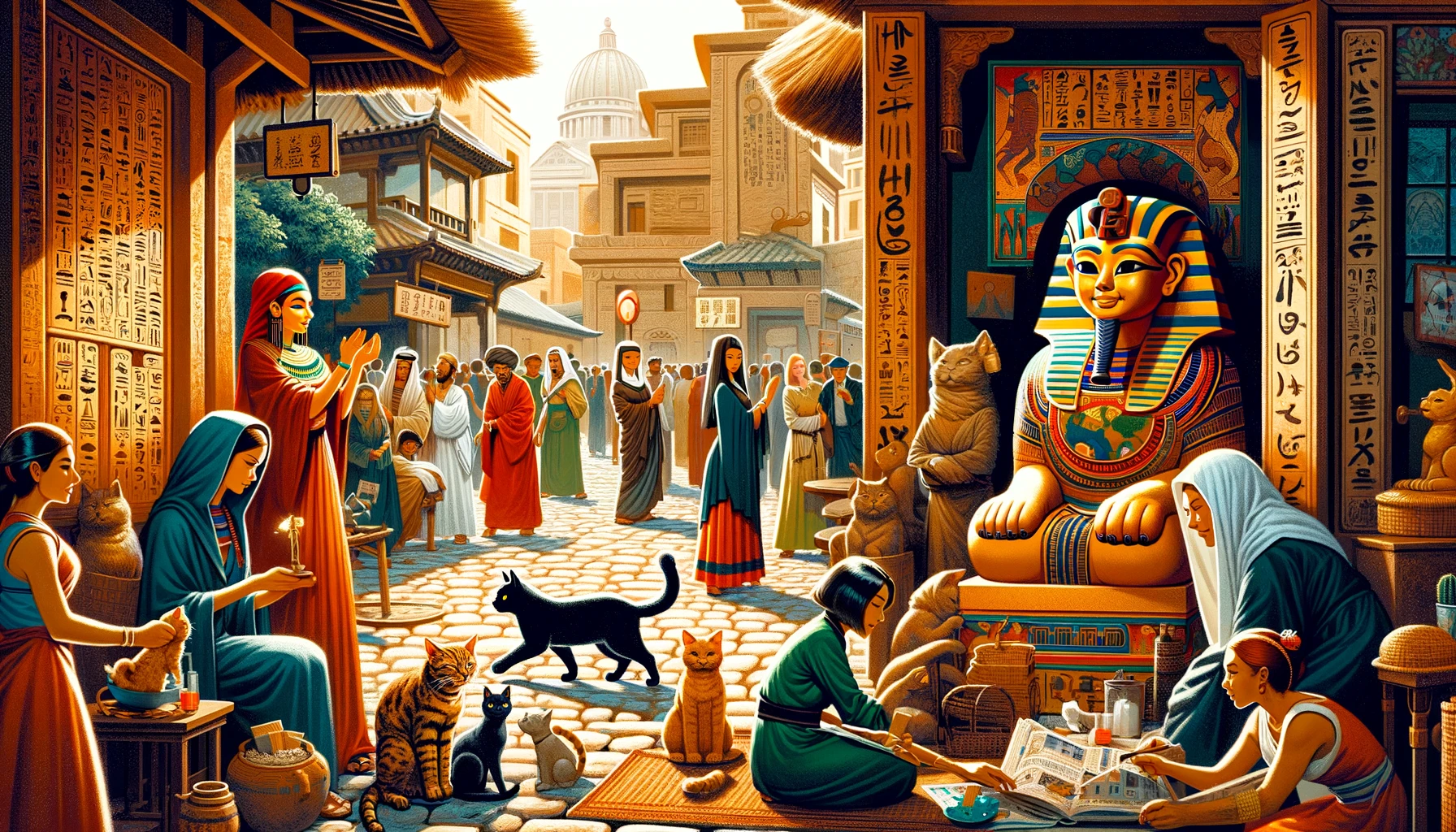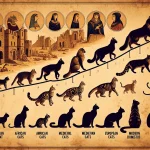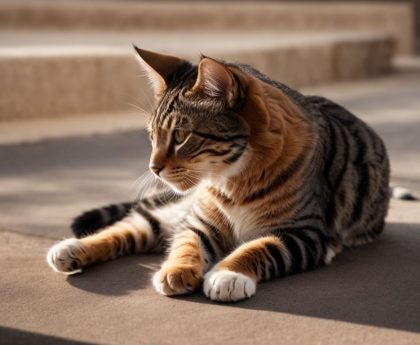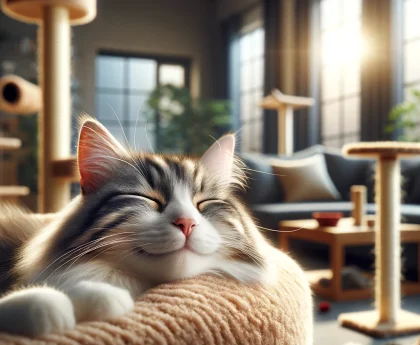The Role of Cats in Different Cultures: A Journey Through Time and Traditions
The role of cats in human society is as varied and complex as the cultures that have cherished, worshipped, and mythologized them throughout history. From ancient civilizations to modern day, cats have been seen as symbols of mystery, protectors, and even deities, reflecting the deep and often spiritual connections humans have formed with these enigmatic creatures. This article explores the multifaceted roles cats have played in different cultures around the world, shedding light on our enduring fascination with these feline companions.
Ancient Egypt: Divine Protectors
Perhaps no culture is more famously associated with cats than ancient Egypt, where they were revered as sacred creatures. Cats in ancient Egypt were associated with the goddess Bastet, who was depicted as a lioness or as a woman with the head of a cat. Bastet was the goddess of home, fertility, and childbirth, symbolizing the protective and nurturing aspects of cats. Killing a cat, even accidentally, was considered a grave crime, punishable by death. Cats were so revered that they were often mummified and buried with their owners to provide protection in the afterlife.
Medieval Europe: Witchcraft and Superstition
The role of cats, particularly black cats, took a darker turn in medieval Europe, where they were often associated with witchcraft and bad luck. This superstition arose partly from their nocturnal nature and the mysterious qualities humans projected onto them. Cats were thought to be familiars of witches, companions with whom they could communicate and perform spells. This led to widespread persecution of cats, which, ironically, exacerbated the spread of plague by reducing the population of cats that could have controlled the rats carrying the disease.
Japan: Symbols of Good Fortune
In Japan, cats are considered symbols of good luck, prosperity, and protection. The Maneki-neko, or the “beckoning cat,” is a common Japanese figurine believed to bring good luck to its owner. Traditionally depicted as a calico Japanese Bobtail with one paw raised in a beckoning gesture, these figurines are often found in businesses and homes. Cats are also featured prominently in Japanese folklore and art, embodying traits such as independence, cunning, and the mysterious.
Islamic Culture: Revered Companions
In Islamic culture, cats are admired for their cleanliness and are considered ritually clean animals, allowing them to enter homes and even mosques. The Prophet Muhammad is said to have had a great fondness for cats. One popular story tells of him cutting off the sleeve of his robe rather than disturbing his cat, Muezza, who was sleeping on it. Cats are thus treated with respect and kindness in many Islamic societies, reflecting the compassionate and considerate treatment encouraged by the faith.
Modern Perspectives
In contemporary society, the role of cats continues to evolve. They are cherished as companions and members of the family, celebrated for their individual personalities and the comfort they provide. The internet has further elevated cats to cultural icons, with countless memes, videos, and images celebrating their quirky antics.
FAQ: The Role of Cats in Different Cultures
Q: Why were cats considered sacred in ancient Egypt?
A: Cats were considered sacred in ancient Egypt because they were associated with the goddess Bastet, symbolizing home, fertility, and childbirth. They were revered for their protective qualities, and harming a cat was a severe crime.
Q: How did the perception of cats change in medieval Europe?
A: In medieval Europe, cats, especially black cats, became associated with witchcraft, bad luck, and superstition. They were often thought to be familiars of witches, leading to widespread persecution.
Q: What does the Maneki-neko represent in Japanese culture?
A: The Maneki-neko, or “beckoning cat,” is a Japanese figurine believed to bring good luck, prosperity, and protection. It is commonly seen in businesses and homes, often depicted as a calico Japanese Bobtail with one paw raised.
Q: How are cats viewed in Islamic culture?
A: In Islamic culture, cats are admired for their cleanliness and are considered ritually clean, allowing them to enter homes and mosques. The Prophet Muhammad’s fondness for cats is well-documented, encouraging Muslims to treat cats with respect and kindness.
Q: Why do cats have a special place in modern culture?
A: In modern culture, cats are cherished as companions and members of the family, celebrated for their unique personalities and the comfort they provide. The internet has also played a role in elevating cats to cultural icons through memes and videos.
Q: Did the superstitions surrounding black cats have any real consequences?
A: Yes, the superstitions surrounding black cats in medieval Europe had real consequences, including the persecution and killing of cats. This not only harmed the cat population but inadvertently contributed to the spread of the plague by reducing the number of cats that could control rat populations.
Q: How do historical views on cats influence our current perceptions?
A: Historical views on cats have shaped contemporary perceptions by embedding cultural significance and symbolism associated with cats in our collective consciousness. These historical perspectives contribute to the multifaceted roles cats play in our lives today, from symbols of luck to beloved pets.
Q: Are cats still considered symbols of luck in any cultures today?
A: Yes, in several cultures, including Japanese culture, cats are still considered symbols of luck and prosperity. The Maneki-neko figurine is a widespread emblem of good fortune.
Q: How did ancient Egyptians handle the death of a cat?
A: Ancient Egyptians often mummified cats and buried them with their owners or in special cemeteries as a sign of respect and to provide protection in the afterlife, reflecting the high regard in which they were held.
Q: Has the internet changed the way we view cats?
A: Absolutely, the internet has significantly changed the way we view cats by spreading their appeal worldwide through viral videos, memes, and social media, highlighting their quirky behaviors and endearing them to a global audience.
Conclusion
The role of cats in different cultures reflects the complex and varied relationships humans have with the animal world. Whether viewed as divine protectors, symbols of bad luck, emblems of fortune, or beloved pets, cats continue to captivate and intrigue us with their mysterious and independent nature. As we continue to live alongside these fascinating creatures, their significance in our lives and cultures will undoubtedly continue to evolve, yet their special place in human history and hearts remains undiminished.





